There are not that many different species of birds to be found on the Isle of May, it's just the numbers that are staggering!
200,000 thousand plus of which includes over 40,000 pairs of breeding Puffins. Everyone loves a Puffin and it's not just human loves that these enigmatic birds have to cope with. Their everyday struggle for survival is monumental.
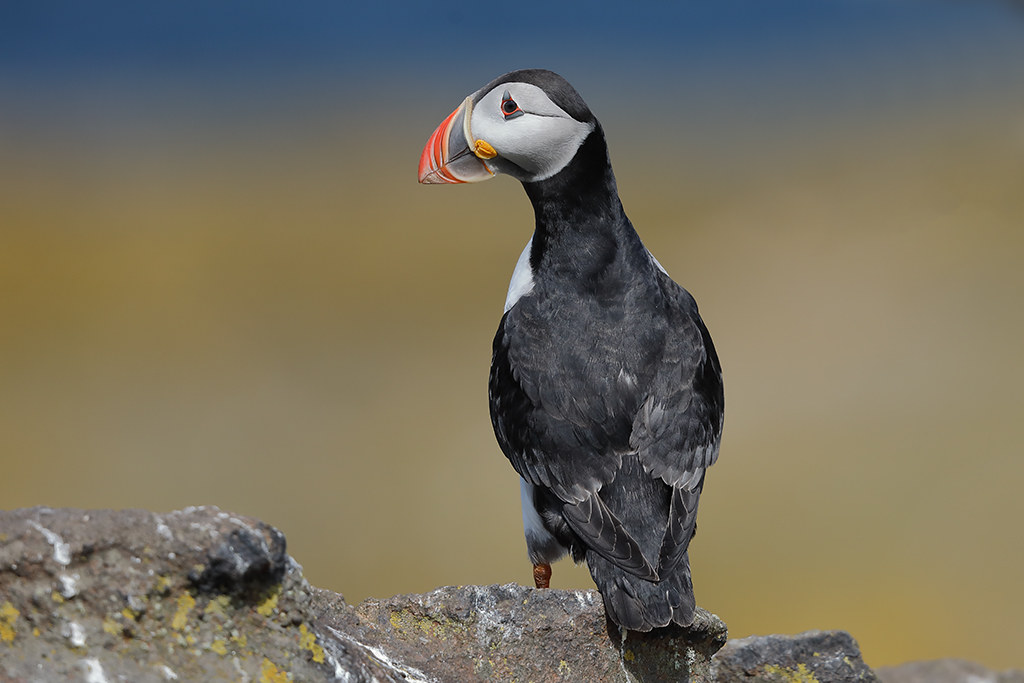
Once the eggs have hatched the Puffins have to fly many miles out to sea , it's estimated as many as 80 miles is not unusual, in search of food. That's of course provided the eggs have hatched as it's not unknown for their nesting burrows to become flooded in particularly bad wet summers.
So who are the villains of the peace?
In fact there are several. Although I don't think that the once nesting Peregrines still stay on the island I may well be wrong. I didn't see one on this visit but in early 2017 I witnessed one fly off with a fully grown adult Puffin.
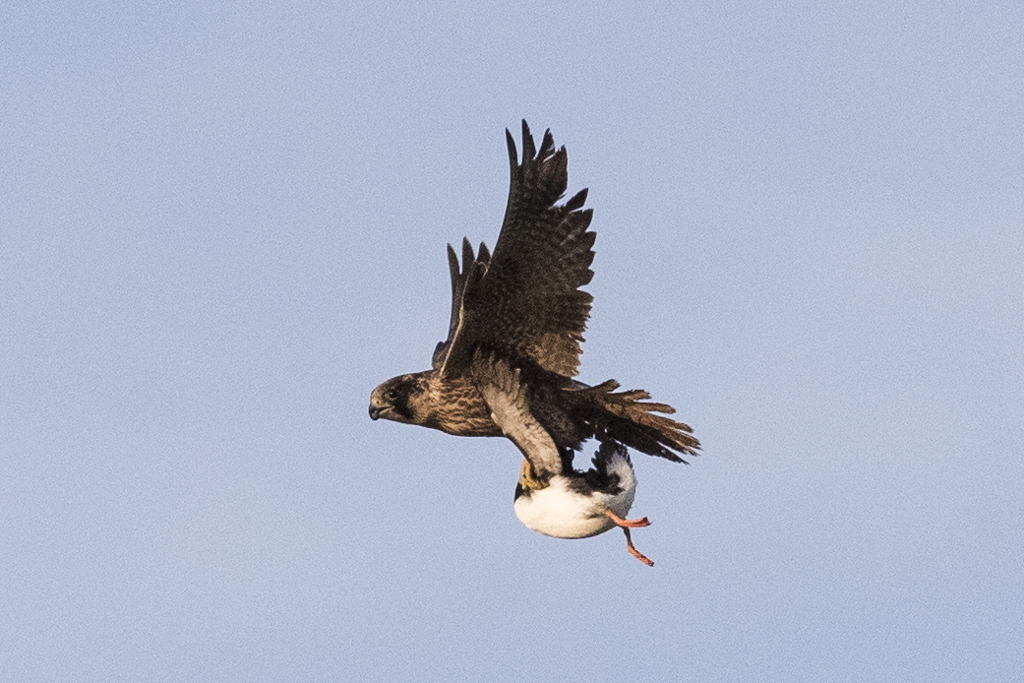
Top of the food chain comes the huge Great Black-backed Gull.

There are several pairs nesting on the island and they are on constant patrol looking for an opportune moment to strike.
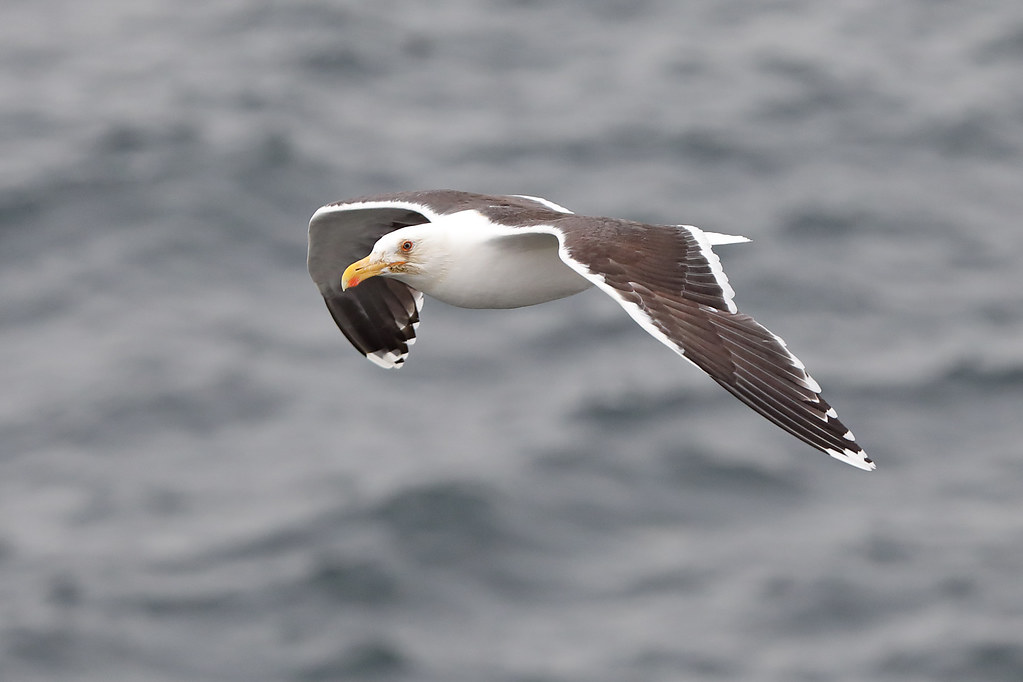
They are capable of carrying off an adult Puffin or a small rabbit, often drowning their victim before setting about ripping them apart with their strong bills.
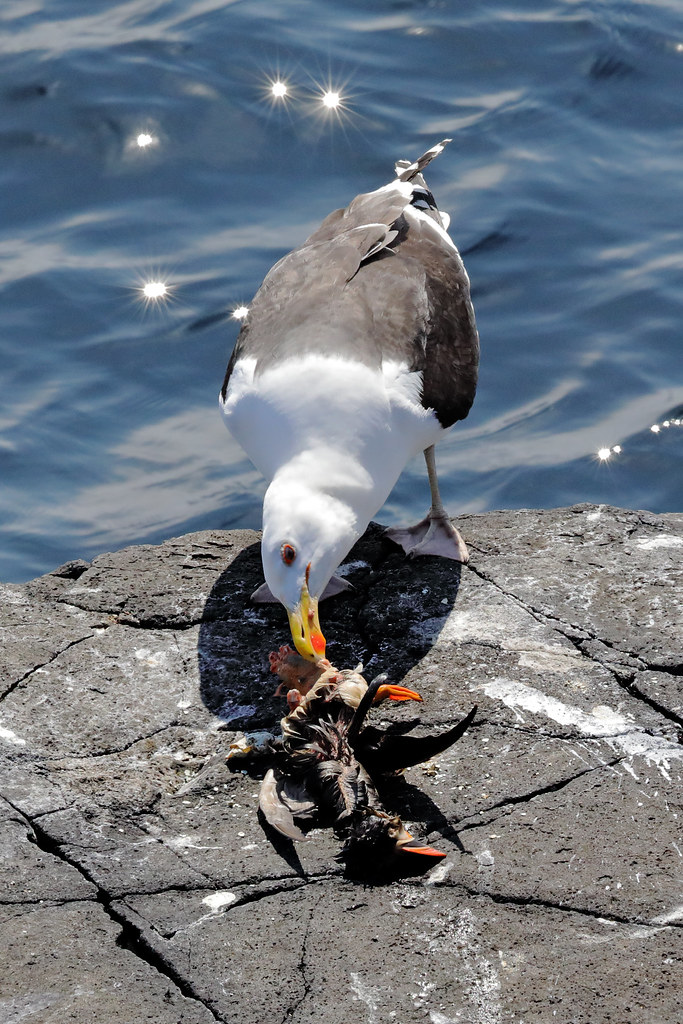
Exposed chicks of Razorbill and Guillemots disappear from their cliff ledge nests in seconds if the parent birds don't keep a constant vigil but it's not just the Great Black-backs that are a threat, their smaller cousins the Lesser Black-backed Gull
.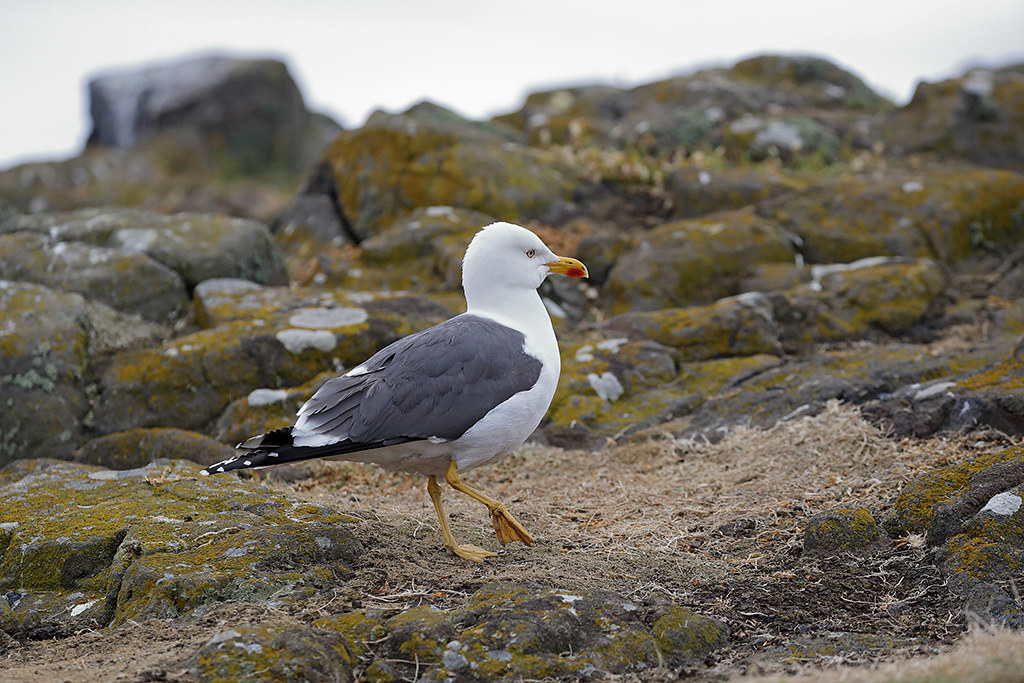
and Herring Gull
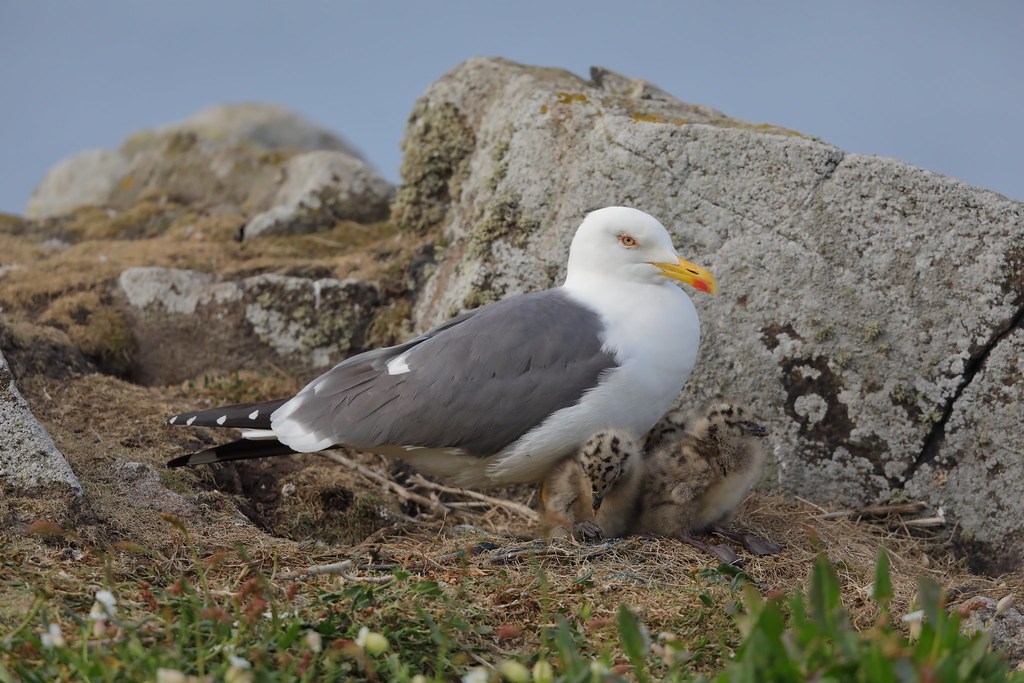
breed in considerable numbers and they too have chicks to feed.
All three of these Gull species will snatch a chick if the opportunity presents itself and they are not particular as to which species it is either.
I have in the past often witnessed Gull on Gull predation, here a Lesser Black-backed has made off with a Herring Gull chick with the chasing posse no chance of saving the victim.
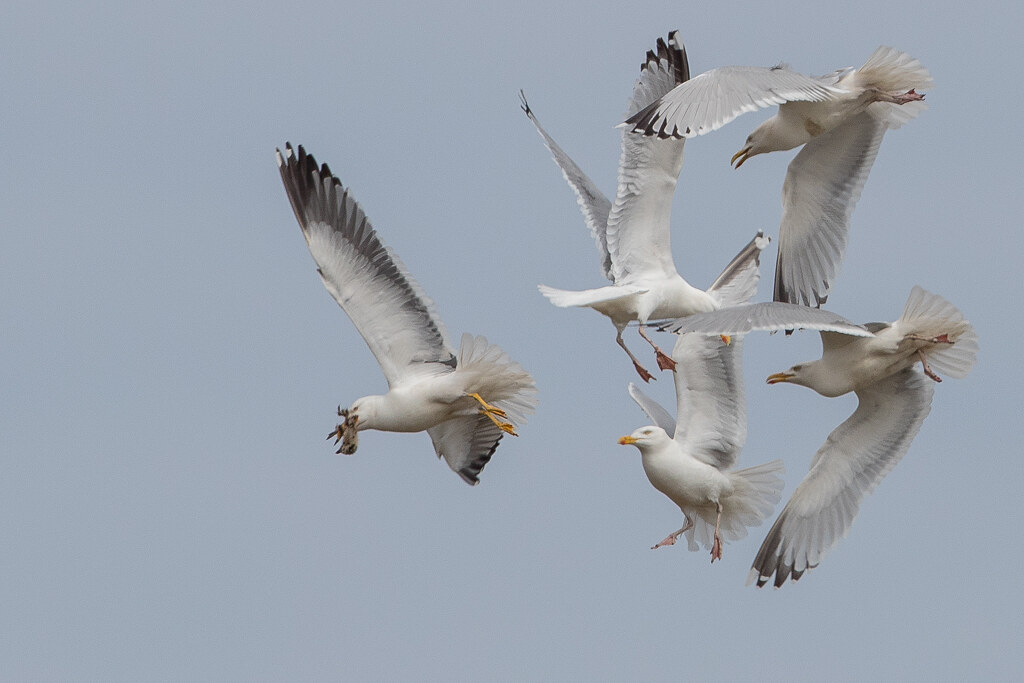
Puffins seem to be the most vulnerable though as it's not just the birds themselves the Gulls are after, it's the food they have searched so long and hard for too that is highly desirable. Both Herring and LBB Gulls harass the returning Puffins in an attempt to make them drop their catch.
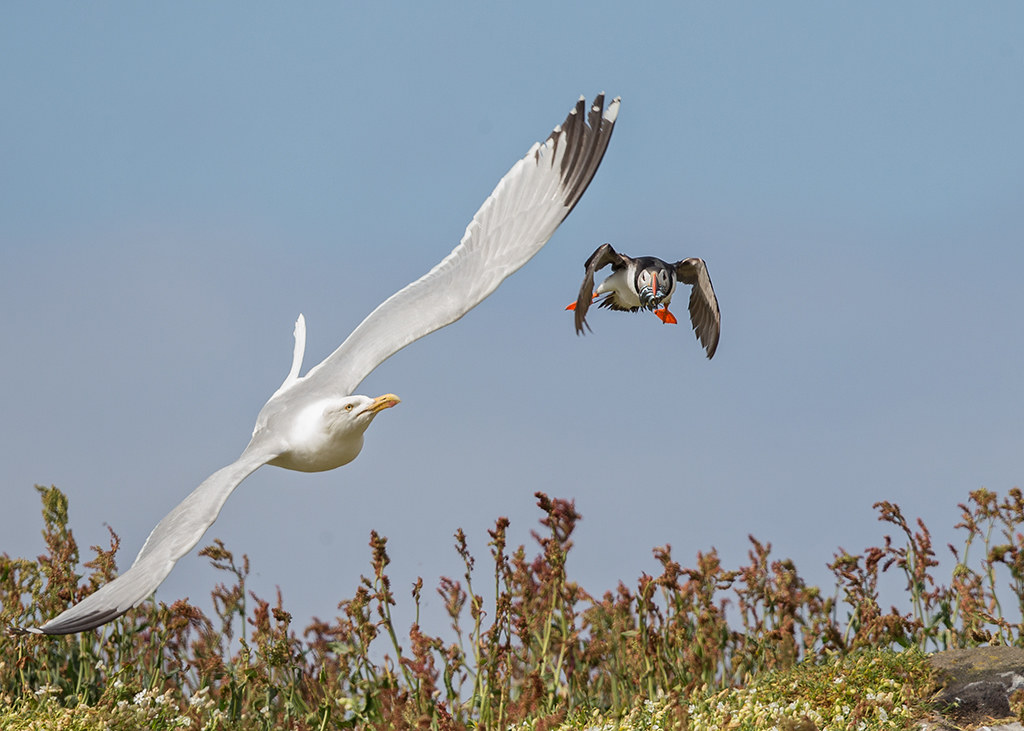
and it's these moments of raw nature that keep drawing me back to witness each time I visit the Isle of May. There is always something new to capture on camera even if the players are largely the same.
Because everything was so late this year the colonies of terns, mainly Arctic, had barely started to lay eggs, indeed more often than not the birds were not even on the nesting sites but sat on rocks in the harbour with matings still taking place.
My hopes of capturing improved shots of the birds bringing back fish to feed their young was a forlorn hope and instead of this
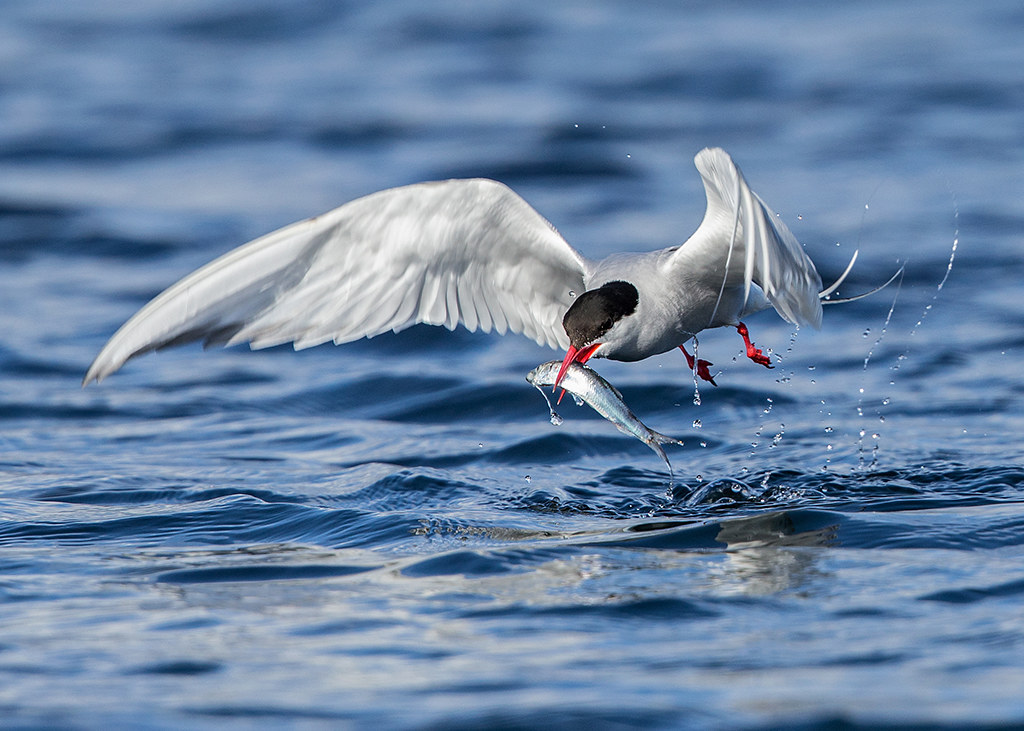
the best I got was the very infrequent view of a bird taking in some water to drink or landing for a bath.
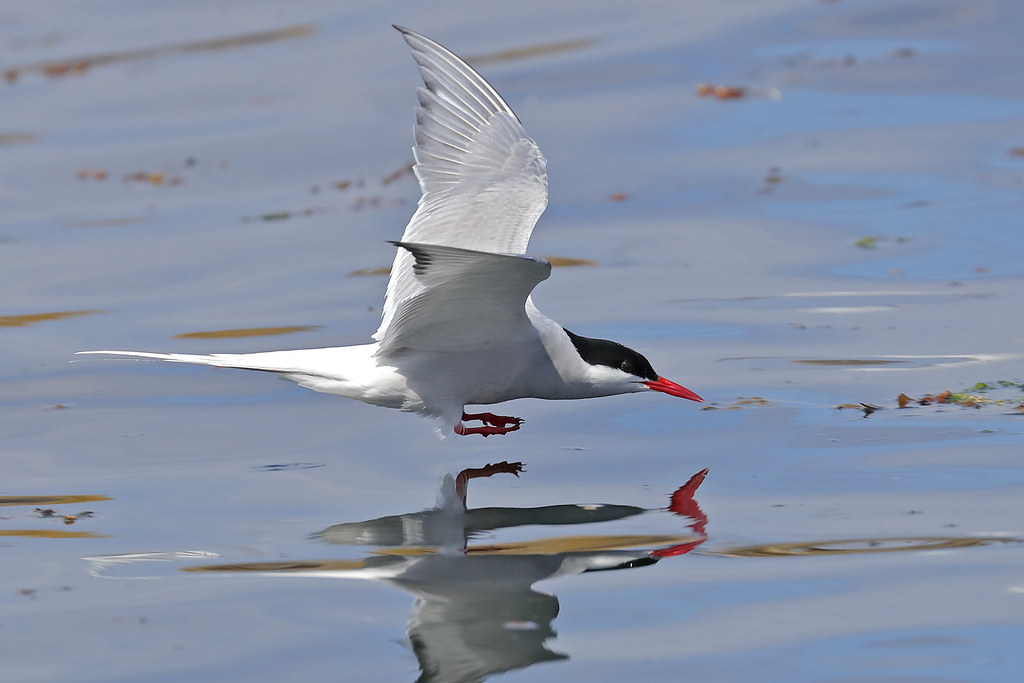

Hopefully I'll get another chance in the future.
We were lucky in as much as the very first signs of Puffins bringing back food started a day after we arrived and by the end of the week the numbers had increased many times over.
Those shots of a bill full of Sand Eels were once my top ambition as a wildlife photographer
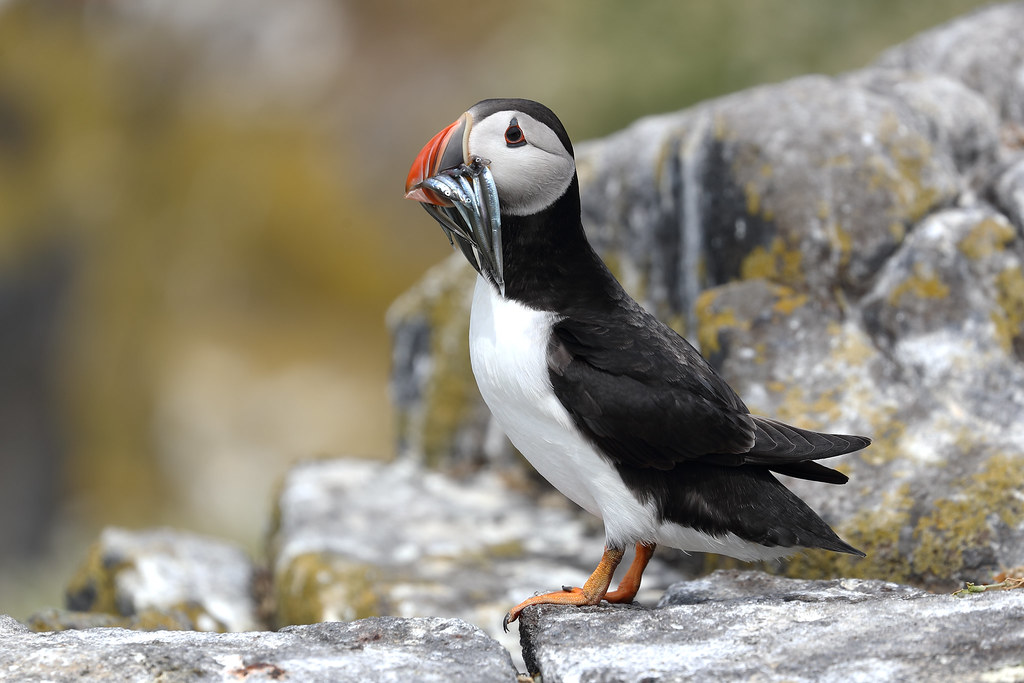
and although they are still fun to take I now try for something a bit more ambitious.

although that's not always the case. Sometimes you realise you haven't got the simple shots of the likes of Shags in flight
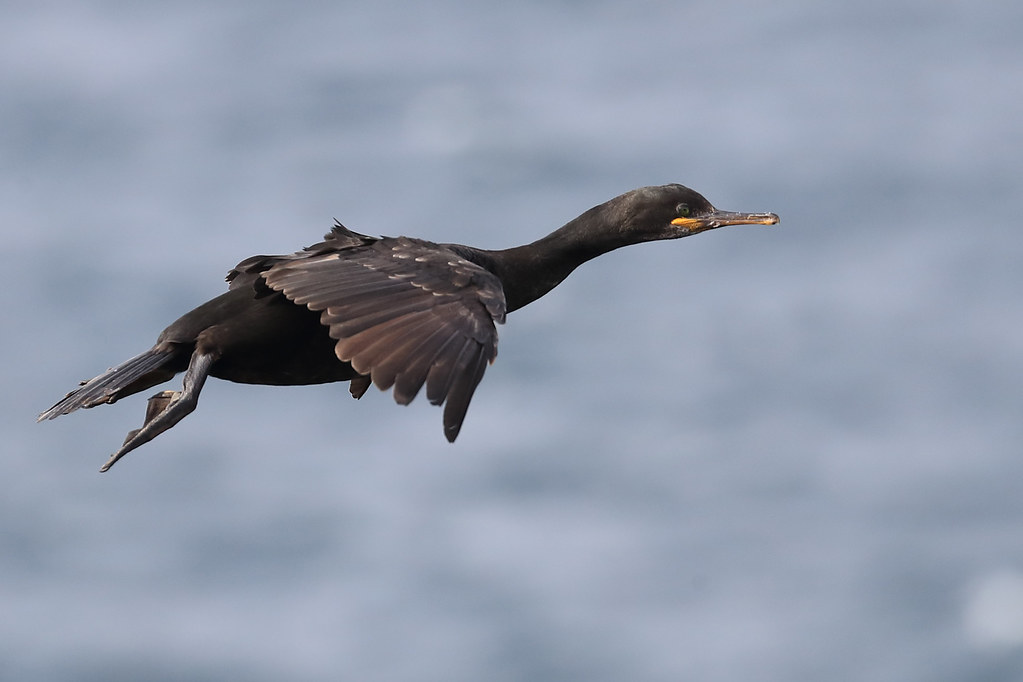
which isn't as easy as it looks as you need particular conditions to get them flying up at your level.
Sitting on the cliff tops on a sunny day just waiting and watching is pure bliss.
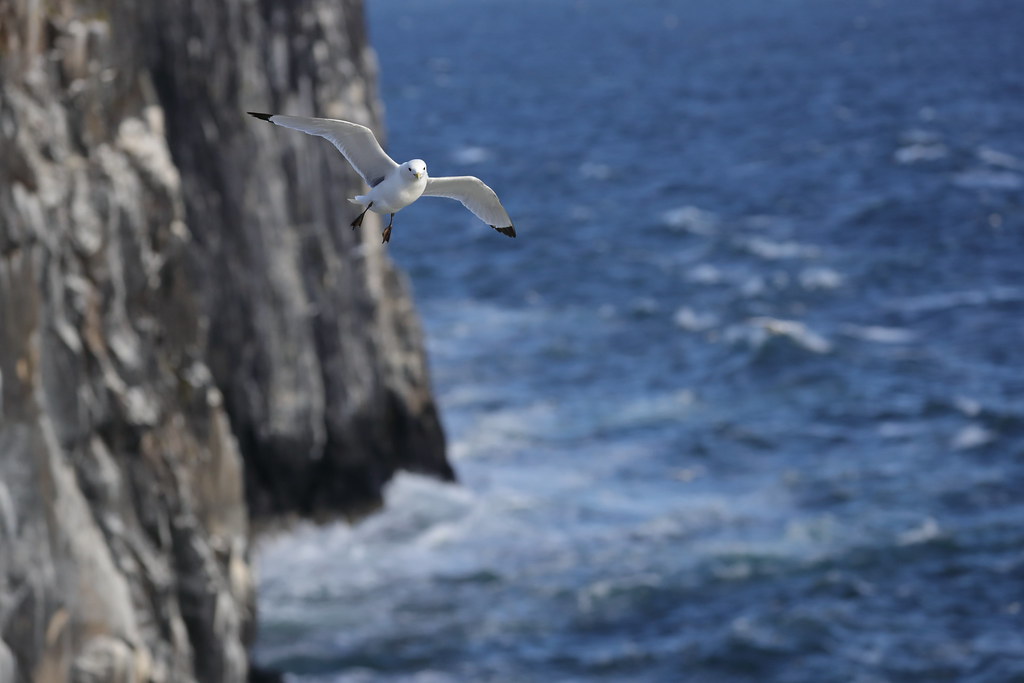
Kittewakes flying for the pure joy of it
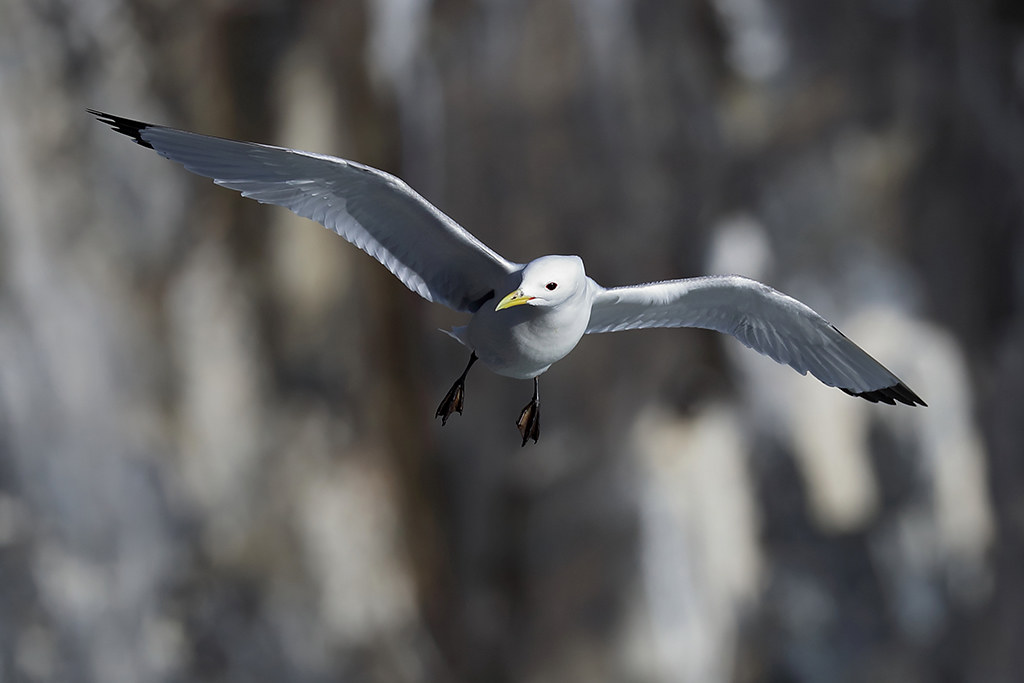
as are the inquisitive Fulmars who come to take a closer look at you.
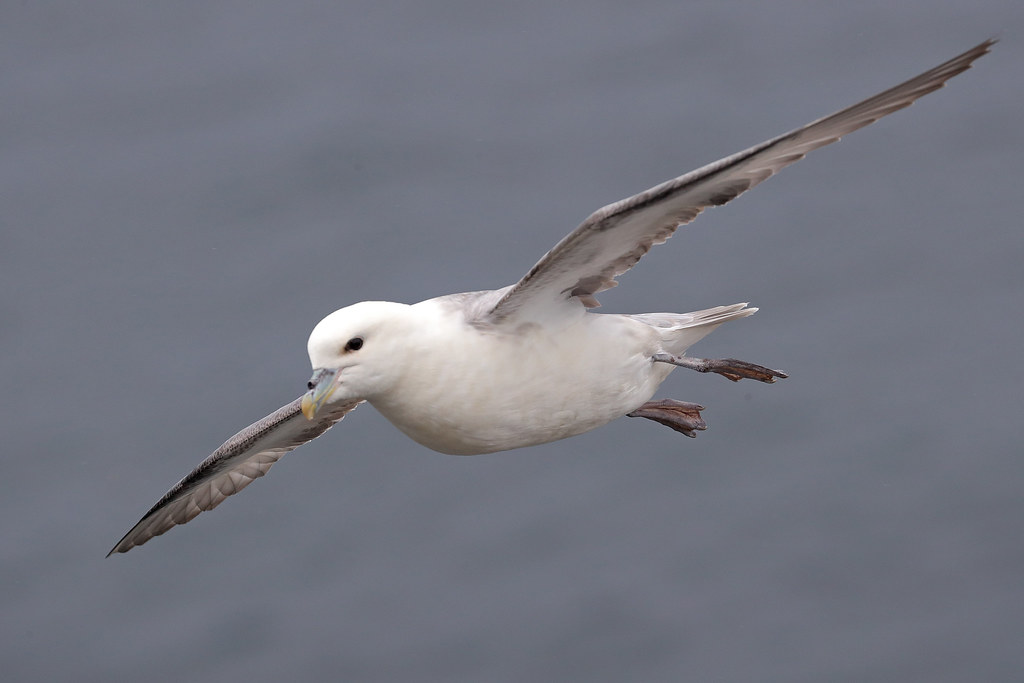
You have to be prepared for the unexpected, a rapid change of camera settings may be needed, just focussing on the action may well prove too difficult leaving you somewhat frustrated but if it was easy you probably wouldn't bother.
Squabbling Kittewakes tumble in flight as they take pecks out of each other.
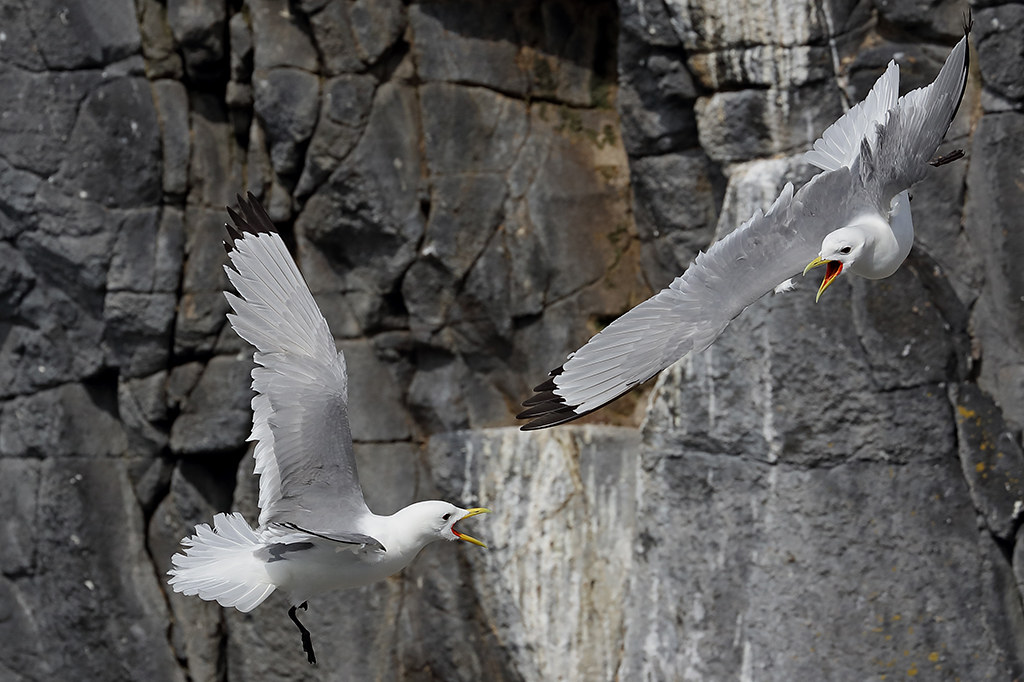
I totally blew that sequence and that was really annoying!
Still, there's always another day so be grateful for what you did get!

Whereas the weather wasn't always bright and sunny the fact you are on the island for more than a few hours gives you a far wider window of opportunity so with a bit of luck your moment will come.
A bit of wind at the cliff tops is ideal in holding the birds up to make photography a bit easier some of the time.
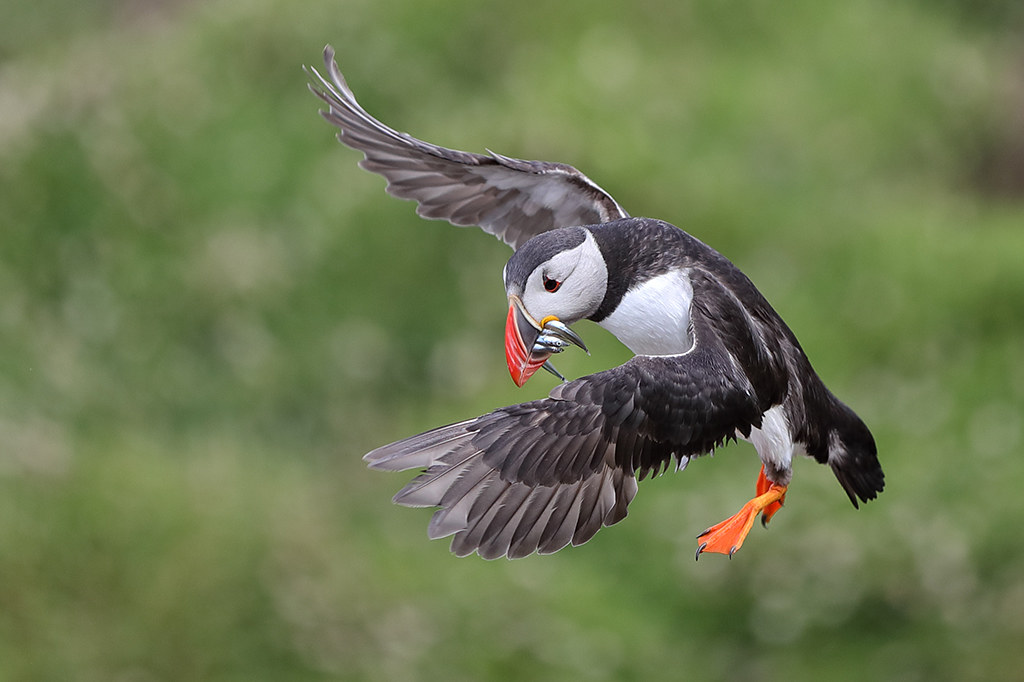
and if you are careful you can actually follow the birds when they take what seem to be exercise flights in an arc around the sea before landing back in the same place.
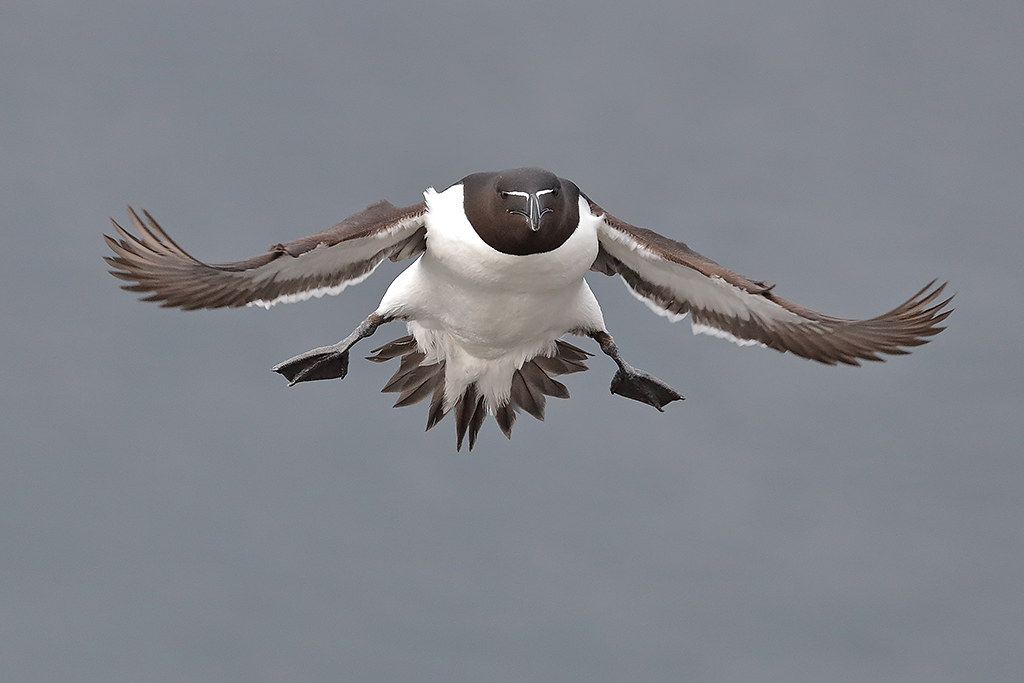
It makes life much easier as you can be prepared in advance of the action.

If the birds fly with the wind it's a more difficult task, particularly with the more aero dynamic Guillemots.
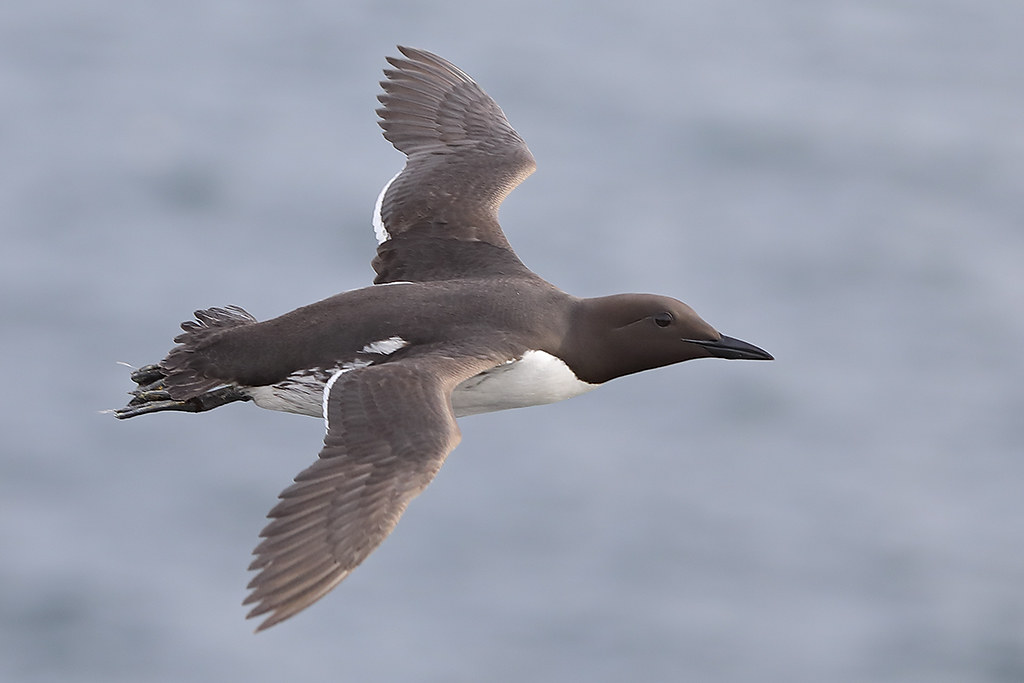
But with patience the opportunity eventually presents itself when circumstances are more favourable.
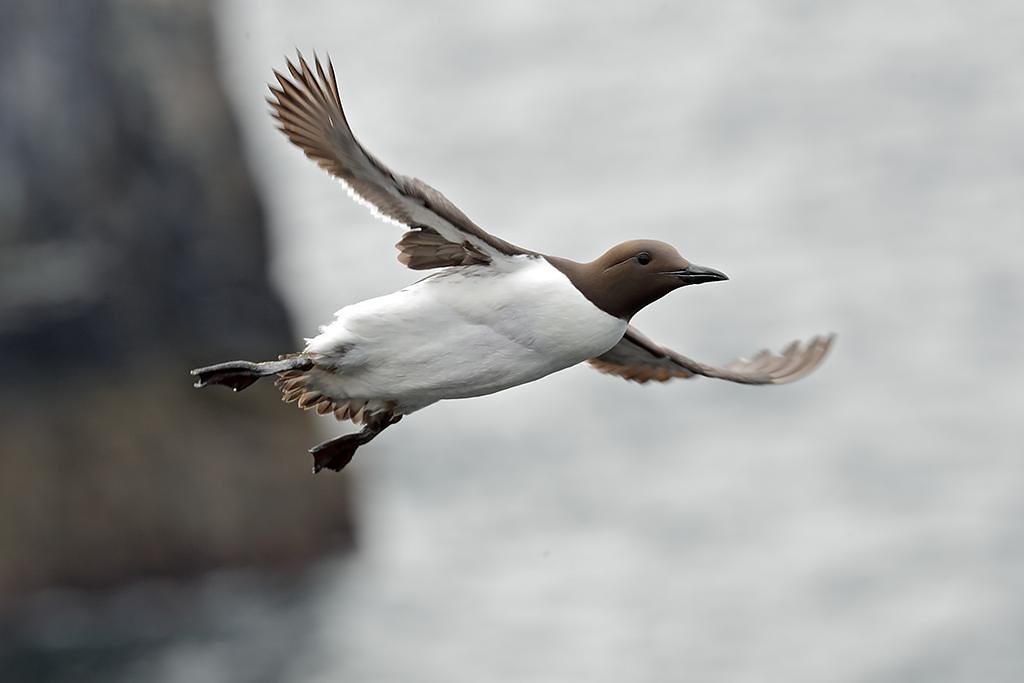
Unfortunately very few were bringing back fish to chicks
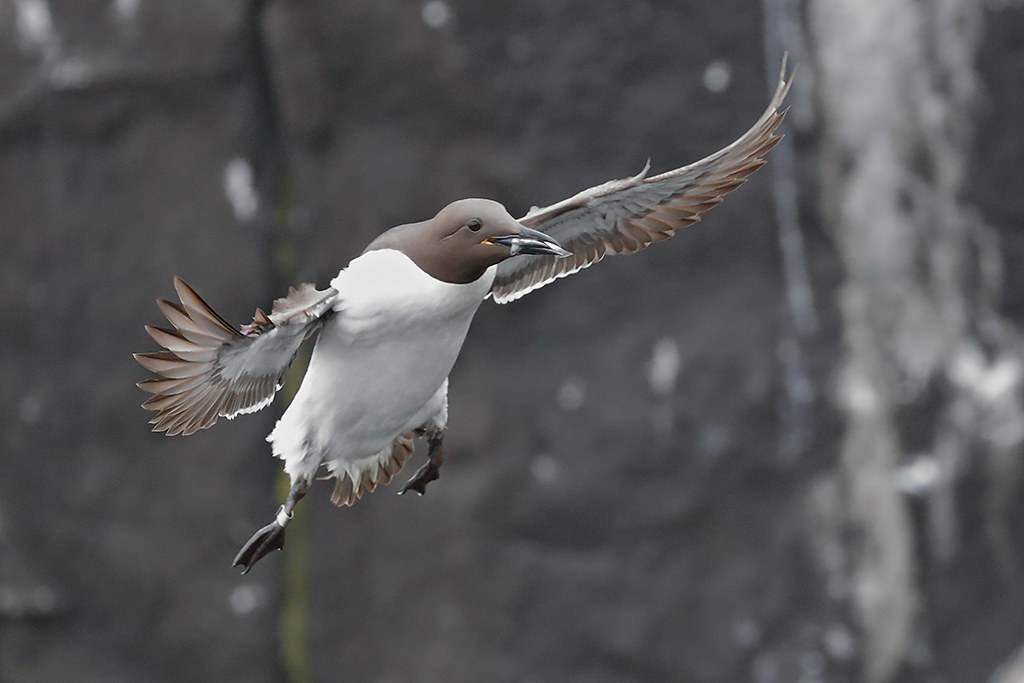
both Guillemots and Razorbills still having eggs to incubate.
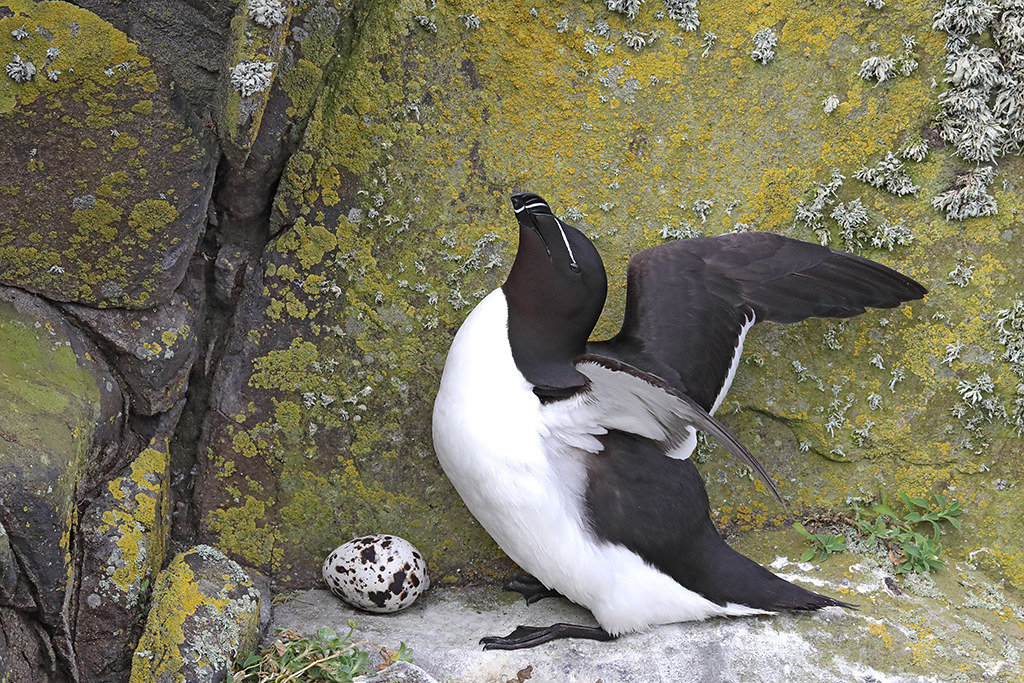
Still there was plenty to keep me occupied and even gave me the opportunity to think of trying for something a little bit arty!
A stunningly beautiful Shag's feathers
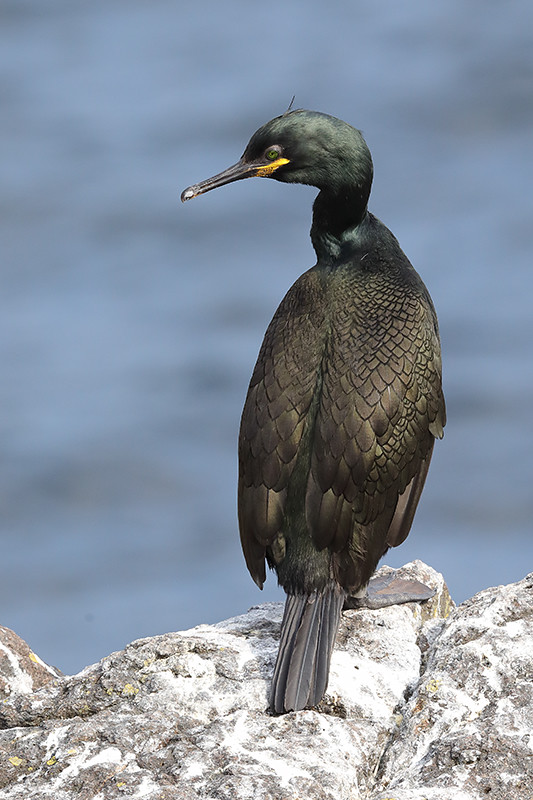
can look more interesting viewed a bit differently.
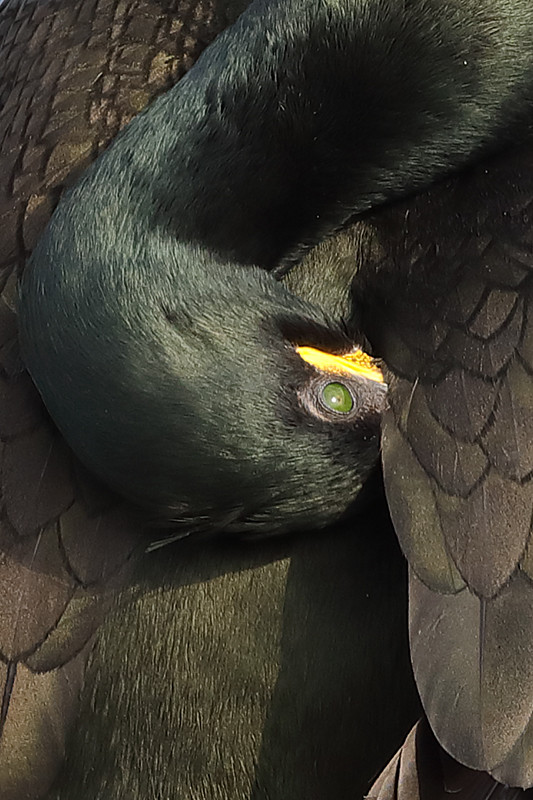
A visit to the Isle of May isn't just about the seabird colonies though, there is more to it than that.
TBC
200,000 thousand plus of which includes over 40,000 pairs of breeding Puffins. Everyone loves a Puffin and it's not just human loves that these enigmatic birds have to cope with. Their everyday struggle for survival is monumental.

Once the eggs have hatched the Puffins have to fly many miles out to sea , it's estimated as many as 80 miles is not unusual, in search of food. That's of course provided the eggs have hatched as it's not unknown for their nesting burrows to become flooded in particularly bad wet summers.
So who are the villains of the peace?
In fact there are several. Although I don't think that the once nesting Peregrines still stay on the island I may well be wrong. I didn't see one on this visit but in early 2017 I witnessed one fly off with a fully grown adult Puffin.

Top of the food chain comes the huge Great Black-backed Gull.

There are several pairs nesting on the island and they are on constant patrol looking for an opportune moment to strike.

They are capable of carrying off an adult Puffin or a small rabbit, often drowning their victim before setting about ripping them apart with their strong bills.

Exposed chicks of Razorbill and Guillemots disappear from their cliff ledge nests in seconds if the parent birds don't keep a constant vigil but it's not just the Great Black-backs that are a threat, their smaller cousins the Lesser Black-backed Gull
.

and Herring Gull

breed in considerable numbers and they too have chicks to feed.
All three of these Gull species will snatch a chick if the opportunity presents itself and they are not particular as to which species it is either.
I have in the past often witnessed Gull on Gull predation, here a Lesser Black-backed has made off with a Herring Gull chick with the chasing posse no chance of saving the victim.

Puffins seem to be the most vulnerable though as it's not just the birds themselves the Gulls are after, it's the food they have searched so long and hard for too that is highly desirable. Both Herring and LBB Gulls harass the returning Puffins in an attempt to make them drop their catch.

and it's these moments of raw nature that keep drawing me back to witness each time I visit the Isle of May. There is always something new to capture on camera even if the players are largely the same.
Because everything was so late this year the colonies of terns, mainly Arctic, had barely started to lay eggs, indeed more often than not the birds were not even on the nesting sites but sat on rocks in the harbour with matings still taking place.
My hopes of capturing improved shots of the birds bringing back fish to feed their young was a forlorn hope and instead of this

the best I got was the very infrequent view of a bird taking in some water to drink or landing for a bath.


Hopefully I'll get another chance in the future.
We were lucky in as much as the very first signs of Puffins bringing back food started a day after we arrived and by the end of the week the numbers had increased many times over.
Those shots of a bill full of Sand Eels were once my top ambition as a wildlife photographer

and although they are still fun to take I now try for something a bit more ambitious.

although that's not always the case. Sometimes you realise you haven't got the simple shots of the likes of Shags in flight

which isn't as easy as it looks as you need particular conditions to get them flying up at your level.
Sitting on the cliff tops on a sunny day just waiting and watching is pure bliss.

Kittewakes flying for the pure joy of it

as are the inquisitive Fulmars who come to take a closer look at you.

You have to be prepared for the unexpected, a rapid change of camera settings may be needed, just focussing on the action may well prove too difficult leaving you somewhat frustrated but if it was easy you probably wouldn't bother.
Squabbling Kittewakes tumble in flight as they take pecks out of each other.

I totally blew that sequence and that was really annoying!
Still, there's always another day so be grateful for what you did get!

Whereas the weather wasn't always bright and sunny the fact you are on the island for more than a few hours gives you a far wider window of opportunity so with a bit of luck your moment will come.
A bit of wind at the cliff tops is ideal in holding the birds up to make photography a bit easier some of the time.

and if you are careful you can actually follow the birds when they take what seem to be exercise flights in an arc around the sea before landing back in the same place.

It makes life much easier as you can be prepared in advance of the action.

If the birds fly with the wind it's a more difficult task, particularly with the more aero dynamic Guillemots.

But with patience the opportunity eventually presents itself when circumstances are more favourable.

Unfortunately very few were bringing back fish to chicks

both Guillemots and Razorbills still having eggs to incubate.

Still there was plenty to keep me occupied and even gave me the opportunity to think of trying for something a little bit arty!
A stunningly beautiful Shag's feathers

can look more interesting viewed a bit differently.

A visit to the Isle of May isn't just about the seabird colonies though, there is more to it than that.
TBC
No comments:
Post a Comment